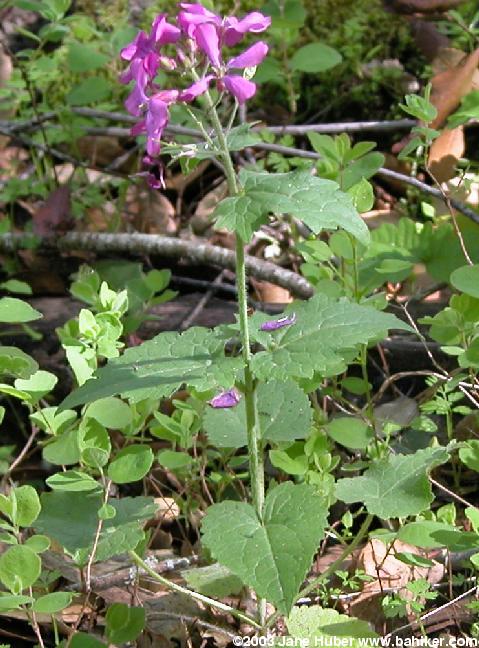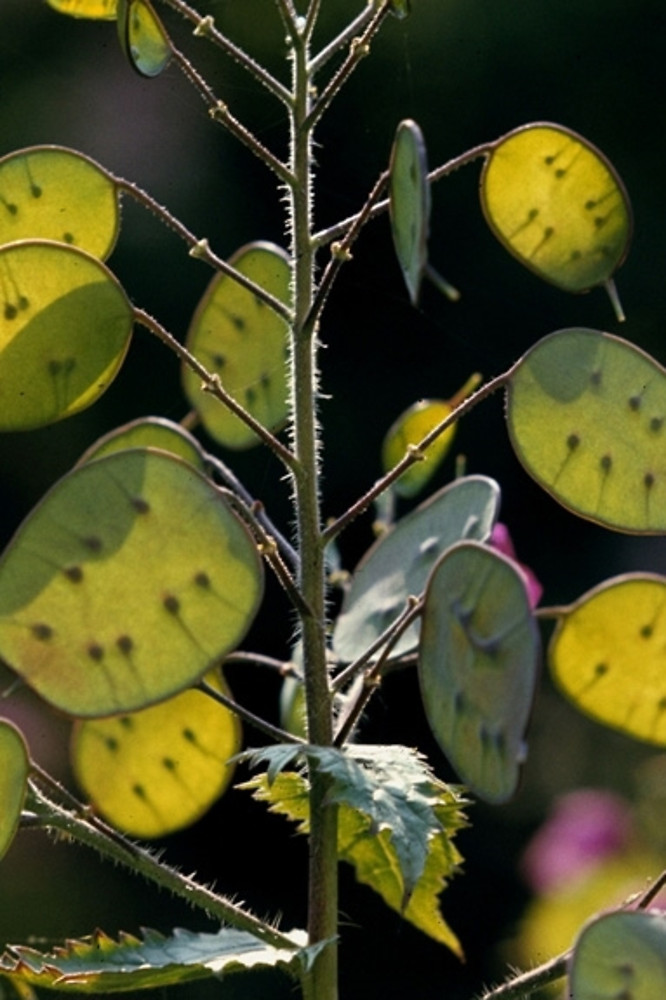Introduced species: Money plant (Lunaria annua)
Characteristics: Money plant—also known as Honesty, Moonwort, and Silver Dollars—is a tall (to 1 m/3ft) biennial in the Mustard family with a hairy stem. Leaves are alternate, 8 cm (3”) long and up to 5 cm (2”) wide; lower leaves are coarsely serrated or shallowly lobed with long, hairy petioles that are green or reddish purple, while upper leaves are sessile (no stem) and smaller. Basal leaves of young plants are more narrow than the leaves of mature plants. Showy white to purple flowers, roughly 2 cm (¾”) across, bloom in mid-spring in elongated clusters (“racemes”) at the ends of the central stem and upper side stems. Distinctive flattened, oblong seed pods follow in summer and early fall; they are green and opaque at first, becoming translucent and papery-white with age and persisting into winter. Money plant is native to southeastern Europe, and is an introduced ornamental.
Spread: Money plant spreads by seeds, which are dispersed primarily by wind. While not usually tending to become monocultural, it can invade otherwise intact natural areas, particularly those next to yards where money plant is growing, and can grow in a variety of conditions from full sun to quite shady, allowing it to compete with native plants in many different habitats.
Control: Plants may be hand-pulled (and bagged if seed pods have started to form). Assiduous gardeners wishing to keep this plant may be able to prevent its spread by regular dead-heading (add the flowers or seed pods to your table bouquet!); be sure to remove seed pods before they are able to blow off the plant to prevent windborne dispersal.
Native Replacement: A native perennial with showy flowers that recommends itself as a replacement for money plant is Douglas iris (Iris douglasiana). Unlike cultivated irises, Douglas iris will tolerate partial to nearly full shade, and produces blooms typical of its genus, ranging from pale lavender to purple. It is also drought-tolerant.



